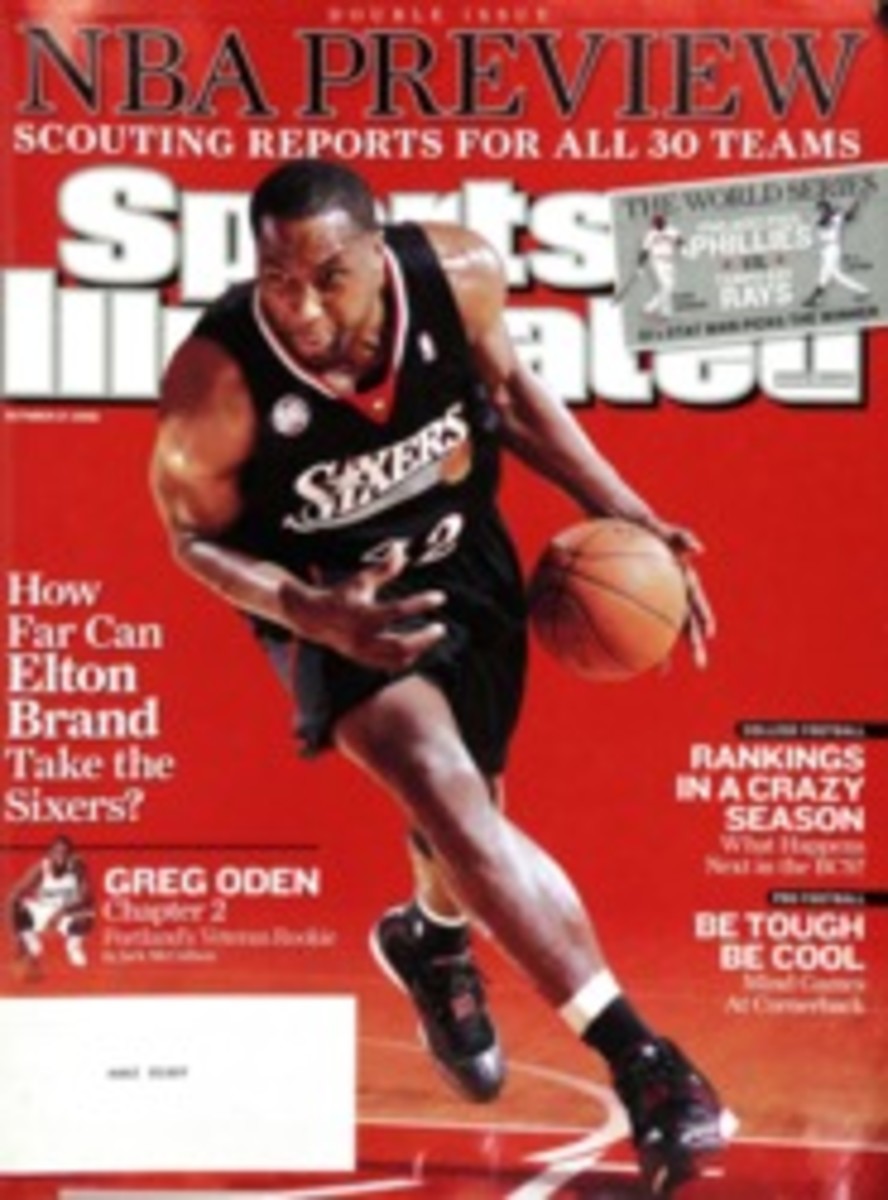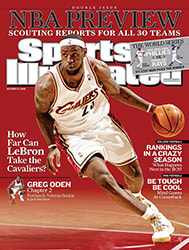
A Five-Mile Jog Through The City of Death
AN ORANGE sun was setting over Baghdad, and a warm breeze wafted down the Tigris. So I laced up my running shoes and headed for the streets. ¶ I pulled open the heavy steel door that led to the outside from my newspaper's compound. I waved to one of our Iraqi guards, who cradled a Kalashnikov. I trotted past a row of concrete blast walls, parted a coil of razor wire that stretched along the sidewalk. I gave a final nod to the guys in the machine-gun tower who watched over my path. And then I was off, on a five-mile jog through the city of death.
Running in Baghdad, my friends back home told me, was madness. An invitation to a kidnapping. A death wish. Or, at the very least, a way to look very stupid if you die. Yet it's never turned out that way. In my 5 1/2 years reporting on Iraq for The New York Times, I have been shot at, beaten, tried in a sharia court, attacked by a mob and chased by kidnappers—but never while running. I've run in the same neighborhood, on the same well-worn trail, yet I've never received so much as a scratch.
It was July 2003 when I went out for the first time. Three months had passed since U.S. forces toppled Saddam Hussein. Every day the situation across the country was getting worse, the insurgency more deadly, the streets more wild. But the neighborhood where I lived, called Bataween, seemed unusually friendly. I knew what I was about to do was risky, but being cooped up in our house in Baghdad—I couldn't stand that, either.
So, pulling on my New Balance 990s, I stepped outside. The reaction was immediate. Men waved and held up bottles of water as I ran by. "Good, good!" one man said in English. "America good!" Abu Nawas, the street where I ran, was lined with fish restaurants that overlooked the Tigris, and as I passed, men held up chunks of masgouf, their beloved bony fish, and asked me to join them. Children stopped their soccer games and ran after me. Even the stray dogs gave pursuit. I felt I was living the scene from one of the Rocky movies, in which Sylvester Stallone goes for a training run in his Philadelphia neighborhood and all the children clamor after him.
I started running that same route every evening, usually well into twilight but still early enough for the streets to be filled with people. My reception was always the same: cheering crowds, squealing kids and friendly stray dogs. In an odd way my five-mile runs up Abu Nawas Street made me wonder what the war in Iraq was all about. All day long, reporting in the country, I encountered hostility and chaos. Yet at night, when I hit the streets, I would not find a trace of that. It was as if the city had exhausted itself in the heat of the afternoon, to lighten up with the setting sun.
One day early on, a young Iraqi boy, about nine years old, ran up alongside me. He had been kicking a ball along Abu Nawas, and as I came running, he left his friends and started jogging next to me in his bare feet. Iraqis sometimes did that, but usually they dropped off after about 50 yards. The boy ran the 2 1/2 miles to the Jumhuriya Bridge, and as I turned to run back on a trail along the Tigris, he dropped off and waved goodbye.
A few days later, at twilight, the same boy appeared again, picking up the trail along the Tigris that ran through Abu Nawas Park. His name, he said, was Hassan. We ran together for a while, me in my running shoes, he in his bare feet. Hassan motioned across the river toward the sprawling compound that once housed Saddam Hussein's Republican Palace and was now the headquarters of the U.S. occupation: the Green Zone. "Saddam house," he said in English. We ran together some more, and Hassan again motioned across the river. "Now, Bush house."
For all the warmth the Iraqis showed me, there was no way to keep out the chaos entirely. One night, without warning, a wall of razor wire went up across Abu Nawas Street. Somebody had decided that the Sheraton Hotel, which sat 100 yards away, was too easy a target for car bombers, who had just begun striking the city. A barricade now stood between me and the rest of the neighborhood. All traffic ceased.
A few days later, sensing the disruption they had caused, U.S. soldiers made an opening in the razor wire so pedestrians could walk through. I resumed my running, but I never saw Hassan again.
One afternoon later in the summer, another Iraqi youngster pulled alongside me as I made my way down the street. She, like Hassan, was about nine years old. Her name was Fatima, she said, huffing next to me and looking up with enormous brown eyes. She wore sandals, and she was very dirty. She kept up the pace.
Fatima and I ran for a couple of miles, her sandals making a scraping sound on the pavement. After a time she indicated that she needed a rest. We stopped at one of the open-air fish restaurants. Everyone seemed to know Fatima; she seemed to know them. A man walked out onto the sidewalk, put a hand on Fatima's shoulder and ran a finger across his neck. "Mother, father finished," the man said. He pointed to the sky, as if to suggest they had been killed by bombs. "Fatima live here," the man said, gesturing with his hand to encompass the restaurant and its environs.
Then a second man walked up, twisted Fatima around and gave her a long and ugly kiss on her lips. He laughed and walked away. Fatima looked at me with very sad eyes, and I suggested that it was time to go.
We ran some more, and after a while Fatima stopped. She suggested, without saying so, that it was time for her to go back. "Bye-bye. Tomorrow, O.K.?" she said, and she turned and walked up the street.
I never saw Fatima again.
As the anarchy spread, my running route shrank—whole sections of it lost to blast walls, razor wire and military checkpoints. By the summer of 2006, when my tour in Iraq finally ended, the country had sunk into something close to civil war. Abu Nawas Park was criss-crossed with barbed wire, deserted. Each day 50 people were kidnapped in the capital, another 100 dumped in the morgue. My once-sprawling 2 1/2-mile route had shrunk to about 500 yards. It stood as a symbol of the dying city that Baghdad had become.
But while I could track the collapse of a country through my running, I found, remarkably, that I could also follow its resurrection. Last summer I returned to Baghdad after nearly two years away. Driving in from the airport, I could scarcely wait to pull on my shoes and hit the streets.
On that first day back I went out again. It was dusk, another orange sun sinking over the Tigris. I stepped through the metal door. I trotted past the blast walls, parted the same coils of razor wire. I headed for Abu Nawas.
And I found the most astonishing thing: calm. The park, the dying place I had left two years before, was filled with Iraqis, perhaps 2,000 of them. The violence had plummeted in Baghdad, and the park had come back to life. Parents walked with children. Kids played on swing sets. Women, most remarkable of all, were walking alone.
I weaved among the Iraqis, trying to keep up a decent pace. For the first time since 2003, I made the full 2 1/2 miles to the Jumhuriya Bridge. I stopped just underneath it, panting and sweating in the summer heat, feeling as though I were in a time warp.
An Iraqi soldier approached. He was in uniform, standing post. He looked me up and down. He held out a bottle of water. "My friend," he said, "what are you doing here?"
I started to explain, but instead I just waved. I started running again, back down the Tigris to my home.
New York Times correspondent Dexter Filkins is the author of The Forever War, published in September by Knopf, from which parts of this article were adapted.
As I passed, men in fish restaurants held up chunks of masgouf and asked me to join them. Children stopped their soccer games and ran after me. EVEN STRAY DOGS gave pursuit.
PHOTO
Photograph by Ashley Gilbertson
WAR AND PEACE For Filkins, running up Abu Nawas was safe compared to reporting on the carnage in Fallujah (left) in 2004.
PHOTO
SCOTT NELSON/WORLD PICTURE NEWS
[See caption above]
PHOTO
ASHLEY GILBERTSON

